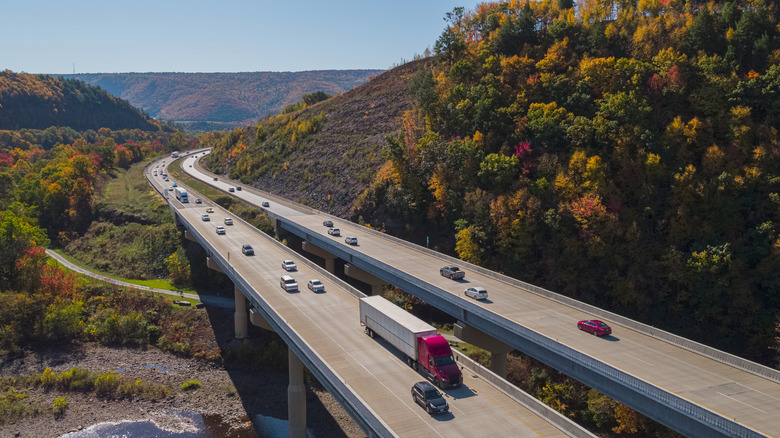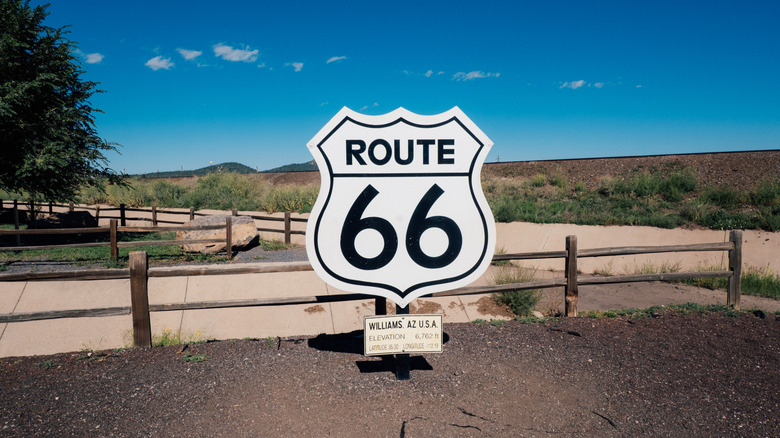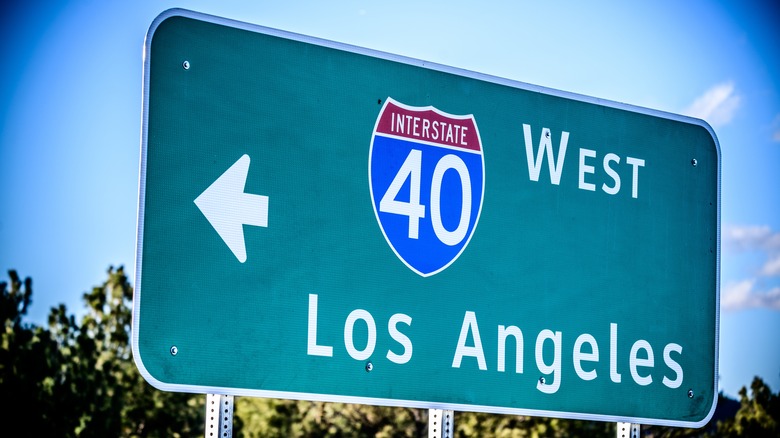The Reason There Isn't An I-50 Or I-60 Interstate In America, Explained
At first glance, the U.S. Interstate Highway system might seem like a logical grid-based masterpiece with a semblance of order behind its numbering system. Odd-numbered interstates run from north to south, and even-numbered routes run from east to west. To simplify the matter further, the numbers climb as you move east or north, and major highways are usually allocated a number that ends in zero. For instance, Interstate 10, one of America's longest highways, crosses the southern part of the U.S. as it makes its way from Santa Monica in California to Jacksonville, Florida. Moving north, you'll encounter Interstates I-20, I-40, I-70, and I-90 — each successive route sitting higher on the map and covering large cross-country distances. However, what you won't encounter is an I-50 or an I-60.
This might seem like a strange thing. Could it be that the Federal Highway Administration (FHA) simply lost count as they pored over maps? Or did they leave a gap to be filled with yet unplanned interstates? In reality, it is neither an administrative oversight nor a project waiting to happen. It was a deliberate choice to avoid confusion. To fully understand why the U.S. interstate network doesn't have an I-50 or an I-60, we need to take a step back in time and have a look not just at the interstate system, but its numbered forerunner — the U.S. Route Network.
What Happened to I-50 and I-60?
Ask anyone to name a famous American highway, and they will probably respond with Route 66. However, Route 66 wasn't always meant to be the headline act. In fact, U.S. Route 60 was originally intended to carry the prestige of becoming the "nation's highway." Due to a political dispute over route numbering in the 1920s, what was supposed to be U.S. 60 west of Springfield, Missouri, was ultimately renumbered as U.S. 66, a twist of fate that gave birth to one of the planet's best grand touring routes and left Route 60 somewhat in the shadows. Importantly, though, Route 60 still exists. As does its lesser-known sibling, U.S. Route 50, often called the loneliest road in America.
The U.S. Route numbering system is similar to the Interstate numbering system, with both using numbers ending in zero for major and transcontinental routes. However, there's an important difference between the systems. The US Route system begins with U.S. 10 as the northernmost route, with the number increasing as you head south, mirroring the interstate system. In essence, this means that somewhere in the middle of the country, there was the potential for both an I-60 and a U.S. 60 to pass through the same state. According to FHA rules, highway numbers can't be duplicated within a state across the U.S. and Interstate systems, as it would create confusion. The existence of Routes 50 and 60, long before the U.S. Interstate system even existed, is the reason that there isn't an I-50 or I-60.
Other U.S. highway naming quirks
The absence of I-50 and I-60 isn't the only oddity in the American highway system. There are notable outliers, many of them rooted in geography, politics, or historical precedent. For example, Interstate 99 breaks the numbering rules entirely. The reason? It was numbered by a local congressman, Bud Shuster, who pushed for the I-99 designation based on childhood memories of a No. 99 streetcar that ran in his hometown. Perks of the job and all that.
There are also cases where highways took a little longer to complete than envisaged. This left routes like the I-95 (the busiest highway in the U.S.) with a gap that lasted for decades. It was only when this gap was finally closed in 2018 that President Eisenhower's dream of a nationwide highway system was completed. Then there's the strange case of I-238 in the San Francisco Bay area. With highways that have a three-digit designation, the final two digits refer to the intercity route it connects to (e.g., the I-495 connects to the I-95). This seems straightforward enough, until you realize that there isn't an I-38. In this case, the I-238 was named as such because it was a reworking of the existing California Route 238. So, it was decided to keep the number designation. Ultimately, even America's most carefully planned roads can take a few unexpected turns when it comes to naming conversions.


